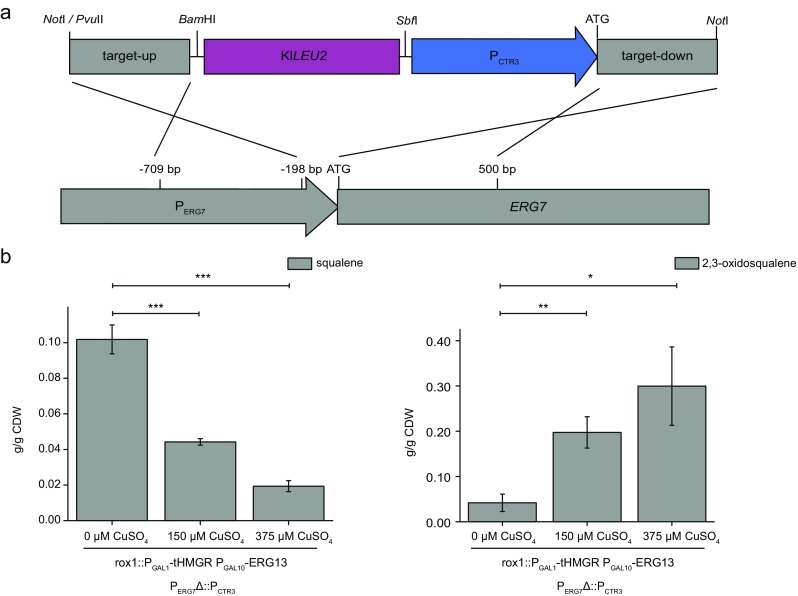Fig. 3.

Repression of ERG7 leads to the accumulation of 2,3-oxidosqualene. a Schematic representation of the construct used for the integration of the copper-sensitive CTR3 promoter (PCTR3). To introduce the promoter into the yeast genome, leucine auxotrophy was complemented by the KlLEU2 gene. The construct was flanked by sequences homologous to the ERG7 promoter (target-up; PERG7) and coding sequence (target-down; ERG7) to place the CTR3 promoter upstream of the endogenous ERG7 coding sequence. b The yeast strain carrying the CTR3 promoter construct showed a reduction in squalene levels and the accumulation of 2,3-oxidosqualene even without exposure to CuSO4 (rox1::PGAL1-tHMGR PGAL10-ERG13 PERG7Δ::PCTR3 0 μM CuSO4). This effect was significantly enhanced in the presence of 150 μM CuSO4 (rox1::PGAL1-tHMGR PGAL10-ERG13 PERG7Δ::PCTR3 150 μM CuSO4; p = 0.00613 for the reduction of squalene; p = 0.00507 for the accumulation of 2,3-oxidosqualene). Higher concentrations of copper (375 μM CuSO4) reduced squalene levels and increased the abundance of 2,3-oxidosqualene (rox1::PGAL1-tHMGR PGAL10-ERG13 PERG7Δ::PCTR3 375 μM CuSO4). Standard deviation was calculated from n = 3 individual transformants. CDW = cell dry weight; one asterisk = p ≤ 0.05; two asterisks = p ≤ 0.01; three asterisks = p ≤ 0.001
